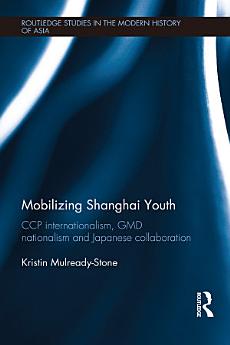Mobilizing Shanghai Youth: CCP Internationalism, GMD Nationalism and Japanese Collaboration
Kristin Mulready-Stone
Nob 2014 · Routledge
E-book
228
Mga Page
family_home
Kwalipikado
info
reportHindi na-verify ang mga rating at review Matuto Pa
Tungkol sa ebook na ito
In the late nineteenth and early twentieth centuries, youth emerged as a new and important social force in many parts of the world. In China the image of this new youth imprinted itself on Chinese consciousness and made clear to potential national leaders that future governments would not be able to ignore China’s youth or expect them simply to step in line. For this and other reasons, the Chinese Communist Party (CCP), the Chinese Nationalist Party (GMD) and a string of War of Resistance-era collaborationist governments all formed youth organizations in an effort to win youth over and harness their vitality and enthusiasm to further their agendas.
Mobilizing Shanghai Youth
explores the similarities and differences among three youth organizations that were connected to Chinese political parties or governments in Shanghai, spanning from the beginning of the May Fourth Movement, just as youth began to emerge as a powerful social and political force in China, to World War II, when Nationalist, Communist and Japanese forces were still competing for dominance. It takes a comparative approach in exploring the similarities and differences, trials and tribulations in how the Chinese Communist Party, Chinese Nationalist Party and a series of collaborationist regimes sought to appeal to youth through the Communist Youth League, the Three People’s Principles Youth Corps and the China Youth Corps. Focusing on Greater Shanghai allows a detailed exploration of the rise and fall of the original Communist Youth League and its connections to international communism. The spotlight on Shanghai also yields the extraordinary finding that the Three People’s Principles Youth Corps was a valuable asset to the Nationalist Party, operating as a potent resistance organization in Japanese-controlled Shanghai whereas branches in Nationalist-controlled territory were factionalized, dysfunctional and a terrible liability for the Party. Most surprisingly, the collaborationist China Youth Corps took the most practical and in some ways the most successful approach to mobilizing China’s youth.The result of exhaustive archival research, this book will be of huge interest to students and scholars of Chinese history, modern history, Communism and the role of youth in revolution.
Tungkol sa may-akda
Kristin Mulready-Stone is Assistant Professor of History at Kansas State University, USA.
I-rate ang e-book na ito
Ipalaam sa amin ang iyong opinyon.
Impormasyon sa pagbabasa
Mga smartphone at tablet
I-install ang Google Play Books app para sa Android at iPad/iPhone. Awtomatiko itong nagsi-sync sa account mo at nagbibigay-daan sa iyong magbasa online o offline nasaan ka man.
Mga laptop at computer
Maaari kang makinig sa mga audiobook na binili sa Google Play gamit ang web browser ng iyong computer.
Mga eReader at iba pang mga device
Para magbasa tungkol sa mga e-ink device gaya ng mga Kobo eReader, kakailanganin mong mag-download ng file at ilipat ito sa iyong device. Sundin ang mga detalyadong tagubilin sa Help Center para mailipat ang mga file sa mga sinusuportahang eReader.





